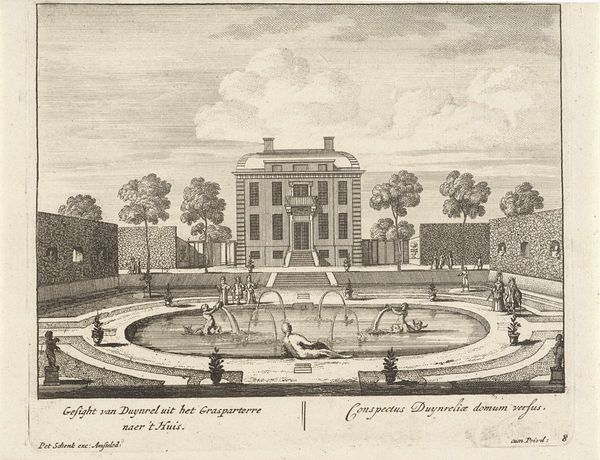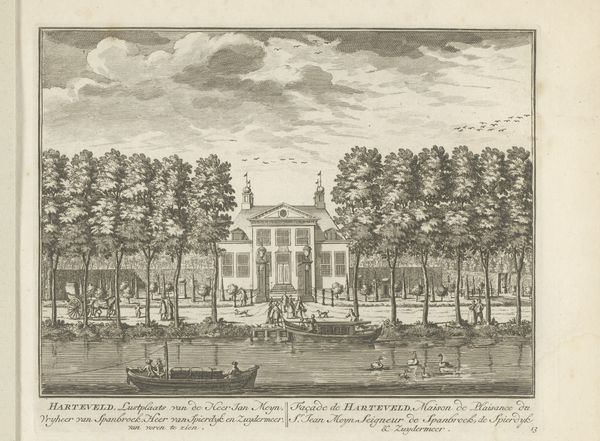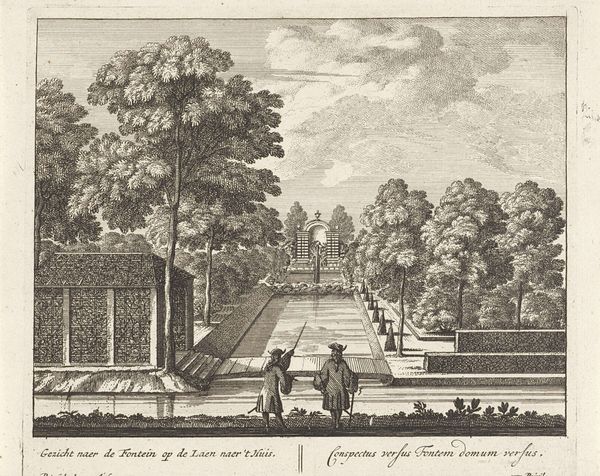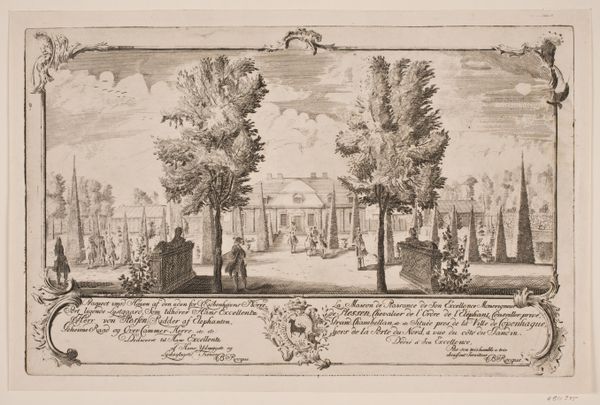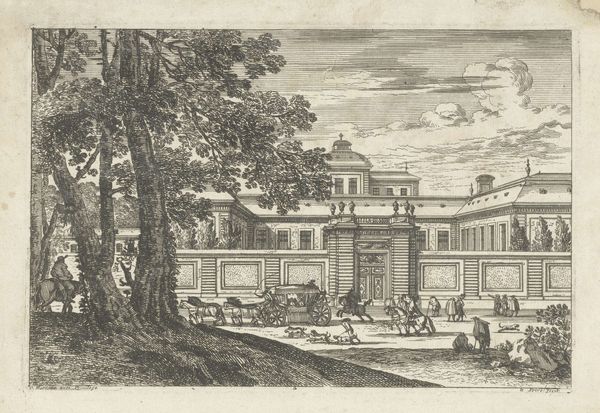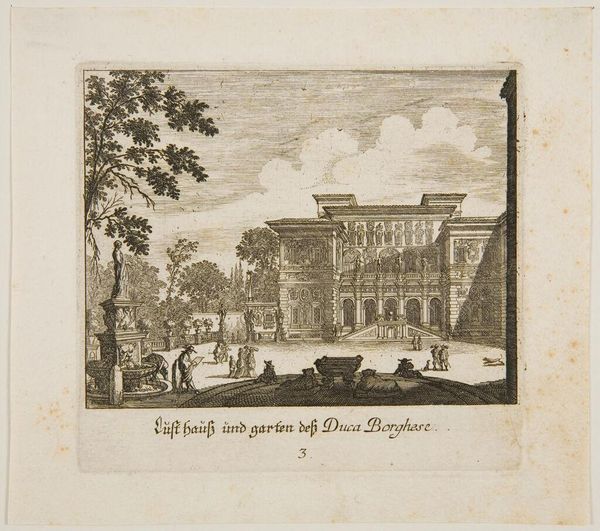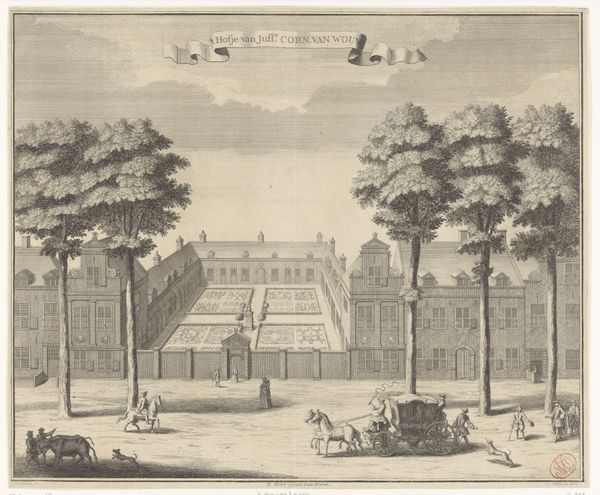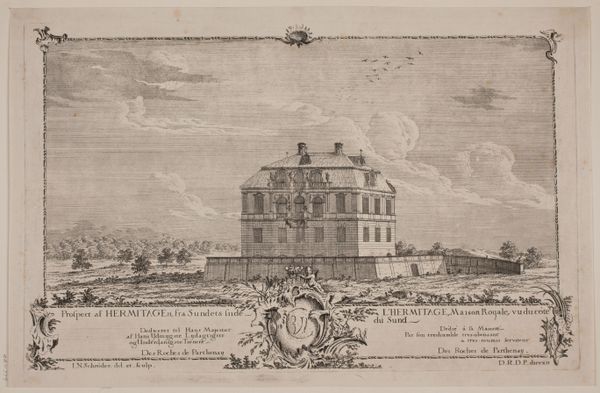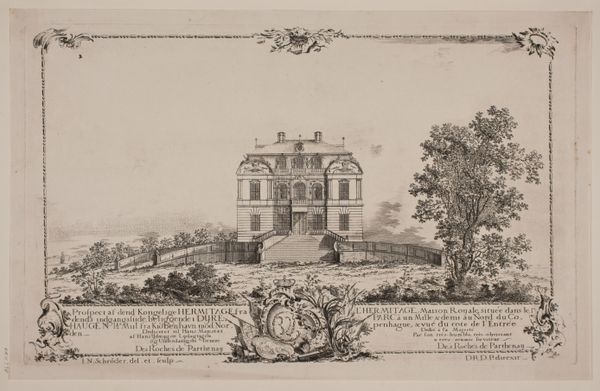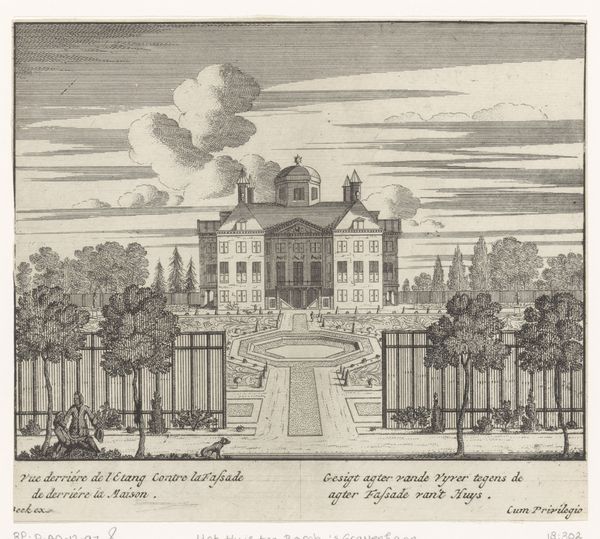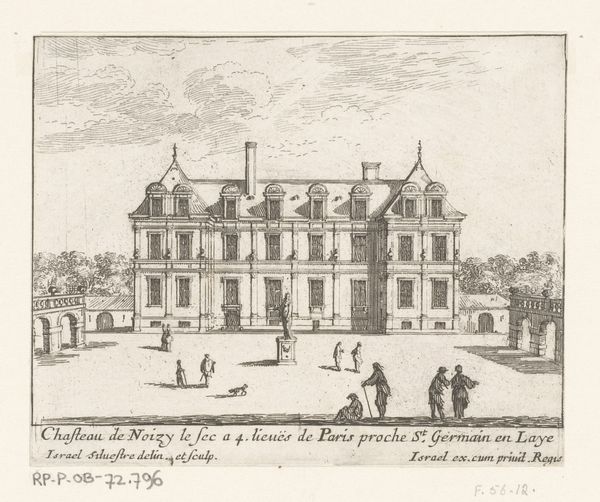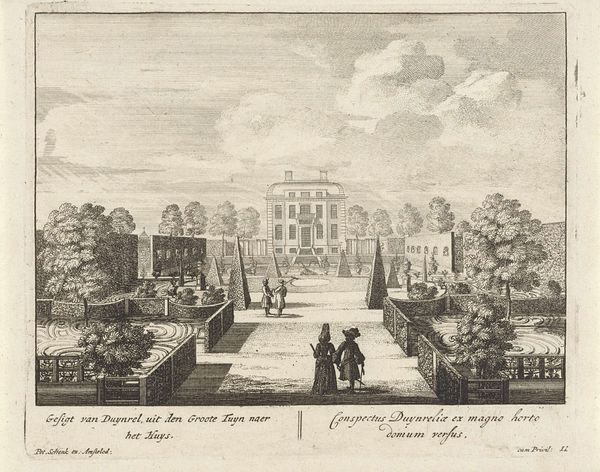
print, etching, paper, engraving, architecture
#
baroque
# print
#
pen sketch
#
etching
#
landscape
#
paper
#
engraving
#
architecture
Dimensions: height 171 mm, width 199 mm
Copyright: Rijks Museum: Open Domain
Curator: This engraving offers us a glimpse into the Duinrell estate, dating back to somewhere between 1675 and 1711. The artist is anonymous, which tells its own story, doesn’t it? Editor: It certainly does. The cool restraint gives the work a balanced almost symmetrical, but perhaps sterile quality. I notice right away that everything is in its proper place, a designed and produced landscape devoid of materiality other than what’s been laid down to form a kind of viewing stage in front of the pavilion. Curator: It speaks volumes about the relationship between the aristocracy and the land during that period. We see a formal garden setting; everything manicured and controlled. It presents an ideal, a statement of power and order reflected in the landscaping itself. This reflects the era’s emphasis on rational design, impacting society’s power structures too. Editor: Definitely. But, look closer, this is a printed piece, likely mass-produced, to sell an idealized view. What materials were readily available to reproduce at that time? What class was being pandered to here? These benches look hastily created. A viewing box as much as anything. Curator: Precisely! This print would have circulated amongst a certain class, reinforcing societal norms of beauty and status. Think about the function of printmaking then, serving to democratize access to images, but also standardizing aesthetic tastes. It shows that gardens weren't just spaces, but statements carefully crafted for social impact. Editor: It raises important questions about consumption, wouldn’t you say? I mean, paper production relies on linen or other discarded fibres at the time. Is that labour accounted for, acknowledged here? It’s an engraving of something carefully, deliberately constructed for visual appeal but divorced from raw making itself. Curator: Absolutely, the distribution of these prints created shared social values of refined taste while further defining the concept of land ownership and aesthetic value. Consider the influence on landscape design: a ripple effect, shaping what was considered desirable or socially advantageous. Editor: It’s a fascinating reflection of its time, this image – its attempt to capture not just scenery, but aspiration. Curator: Agreed. The work illuminates so many cultural threads of the era.
Comments
No comments
Be the first to comment and join the conversation on the ultimate creative platform.
